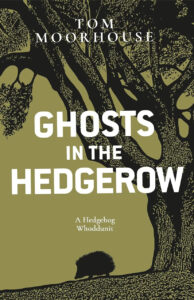 Ghosts in the Hedgerow is the new book by conservation research scientist Dr Tom Moorhouse. His previous book, Elegy for a River, was a heartfelt tribute to UK rivers and included many wonderful tales of his fieldwork adventures beside rivers, fens, lakes and more. He discussed the threats currently facing these habitats and their occupants, the conservation work currently taking place and what he believes is needed to repair the degradation that has occurred. Ghosts in the Hedgerow follows a similar format but instead looks at Britain’s favourite mammal – the hedgehog.
Ghosts in the Hedgerow is the new book by conservation research scientist Dr Tom Moorhouse. His previous book, Elegy for a River, was a heartfelt tribute to UK rivers and included many wonderful tales of his fieldwork adventures beside rivers, fens, lakes and more. He discussed the threats currently facing these habitats and their occupants, the conservation work currently taking place and what he believes is needed to repair the degradation that has occurred. Ghosts in the Hedgerow follows a similar format but instead looks at Britain’s favourite mammal – the hedgehog.
Moorhouse presents the full story of the hedgehogs’ plight in the face of humanity, following three years of conservation research focusing on the species. This book opens with a classic fictional murder mystery scene: the guests are gathered around a detective who announces that a murder has occurred, the murder of a hedgehog. This tongue-in-cheek opening with its amusing if perhaps stereotypical cast of characters makes the data-dense introductory chapter easy to read. Snippets of this continue throughout as welcome breaks to the often sombre topics covered. The book is split into five more sections, the first four covering each main ‘suspect’ in the decline of hedgehogs: cars, agriculture, modern gardens, and the badger – a species which is also the focus of conservation efforts. The final section ‘A Murderer Unmasked’ and the afterword ‘One Final Word’ presents Moorhouse’s solution.
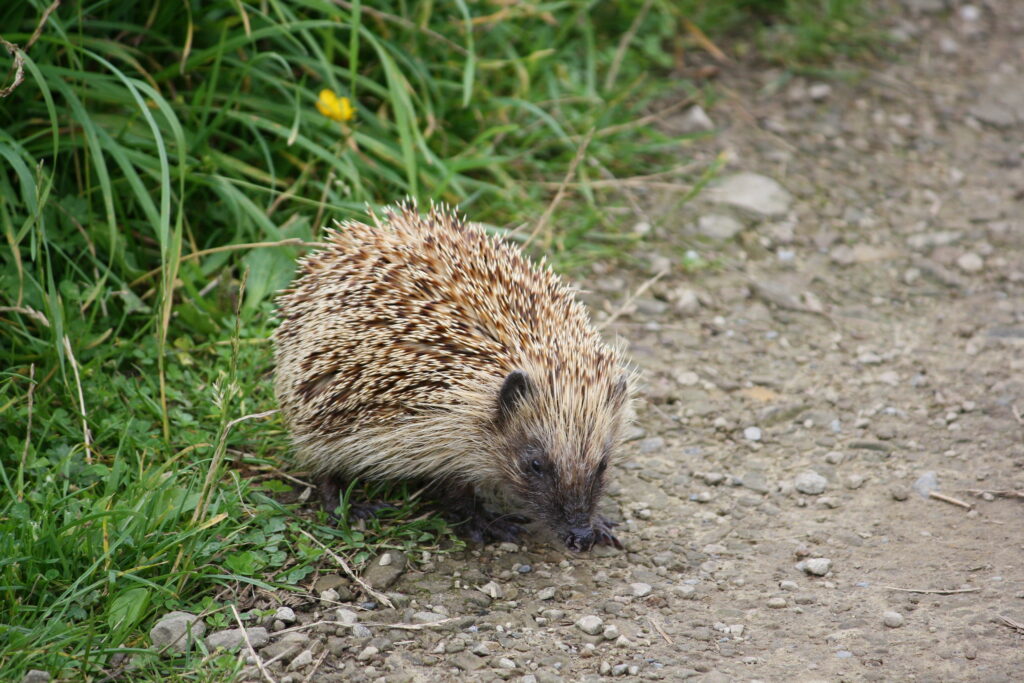
The second chapter, ‘Driven to Destruction’, highlights the main obstacle behind identifying the significant causes of hedgehog decline and developing an effective solution: the lack of accurate population estimates. It is generally quoted that there were around 36 million individuals in the 1950s. But it is worth noting that this number was based on one ‘survey’ where ten hedgehogs were seen in ten acres on a single walk, thus estimating a population density of one hedgehog per non-urban acre in Great Britain, regardless of habitat type (excluding upland areas where hedgehogs are known to be scarce). Current estimations of the overall population are based on various smaller surveys of hedgehogs within certain habitats, with that data extrapolated based on the amount of these habitats in the UK. But due to the small number of these habitat surveys and their short study time, each current population estimate has limited reliability. Without accurate and reliable population estimates, the true impact of the various threats is unclear, and the implemention and monitoring of conservation efforts can be jeopardised.
Moorhouse also highlights another issue with hedgehog conservation, or with conservation in general, in chapter three, ‘The Tale of Tommy Brock’, – trade-offs. No conservation effort occurs in a vacuum, just as no species lives in a vacuum. Any efforts made for one species will likely have an impact on another, whether that be positive or negative. Badgers have faced decades of persecution, often being the scapegoat of many agricultural issues. Their populations had declined so much that they were considered uncommon, until the 1980s when concerted efforts were made to protect them. Badgers are now one of the most protected species in the UK and their numbers are up 50-80% (depending on the survey data). Ghosts in the Hedgerow discusses one of the potential environmental trade-offs of this conservation success – the impact on hedgehogs, one of the badgers’ prey items. Hedgehogs tend to avoid badgers, so they are increasingly pushed out of more and more areas as badger numbers increase. This story is not as simple as it first seems, however, as badgers are found not to be the most important factor when studies examined hedgehog densities. Additionally, as Moorhouse points out, badgers and hedgehogs have coexisted for thousands of years; while they may be contributing towards hedgehog decline, it is unlikely that they are the root cause.
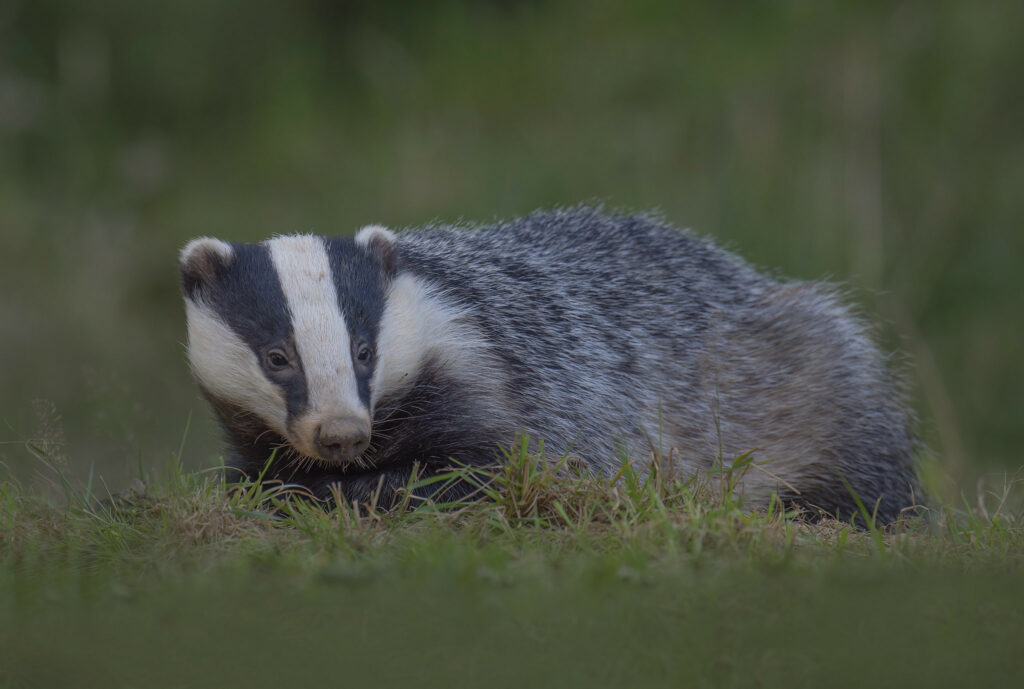
Throughout the book, Moorhouse takes these complicated factors and picks them apart, examining the reliability of the data and challenging baseless assumptions. He discusses the impact of hedgerow removal in the 1930s and 40s, the emerging threat of automatic lawnmowers, the problem of enclosed gardens and the reluctance of landowners to cut holes into fences for ‘hedgehog highways’. He includes injuries caused by strimmers, the impact of slug pellet overuse, the massive loss of invertebrate biomass and diversity, and the increasing impacts of agricultural conversion and intensification, and urban expansion. Each one of these stressors may have been survivable on its own if it weren’t for the others. Therefore, it is not one ‘murderer’ but the synergistic interaction between a combination of stressors creating a cumulative effect on hedgehog populations. Moorhouse refers to it as ‘death by a thousand cuts’.
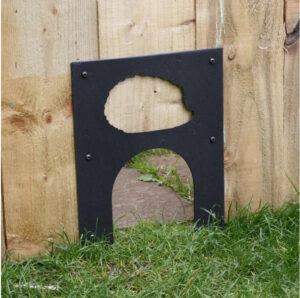
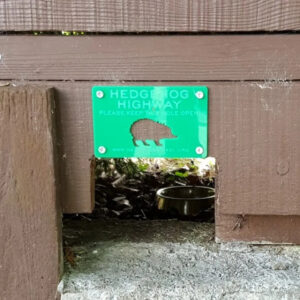
The final sections of Ghosts in the Hedgerow, chapter six ‘A Murderer Unmasked’ and the afterword ‘One Final Word’, is where Moorhouse presents his solution. The important part of any conservation proposal is to make sure, as Moorhouse puts it, it doesn’t result in a “trade-off in human lives”. Moorhouse suggests small lifestyle changes, for instance reducing your meat intake, particularly beef as its production is a major cause of biodiversity loss and global emissions; purchasing food from farms that use less environmentally harmful chemicals or practices; writing to MPs about local ventures such as planting street trees and traffic reductions; recording hedgehog sightings; and allowing your garden to become wilder and more accessible. The book ends on a final word, a collation of advice from several well-known and passionate hedgehog lovers, experts and authors, including David Wembridge, Hugh Warwick and Pat Morris. He believes that these small-scale personal changes, alongside more large-scale governmental and policy changes, such as more environmentally friendly regulations for new building developments, more sustainably managed public green spaces and serious reductions in consumption and food waste, might give hedgehogs the best possible opportunity to thrive.
Ghosts in the Hedgerow is a funny but serious, light-hearted but uncomfortably honest lament for the plight of our favourite mammal and a strong call for widespread conservation to be implemented. It is a well-researched and compelling read, filled with footnotes, puns and anecdotes that bring this topic to life. This truly is the perfect read for anyone who loves hedgehogs, wants to be more wildlife friendly, or is just interested in the complicated problems of conservation efforts in Britain.
Ghosts in the Hedgerow: A Hedgehog Whodunnit
By: Tom Moorhouse
Hardback | March 2023






